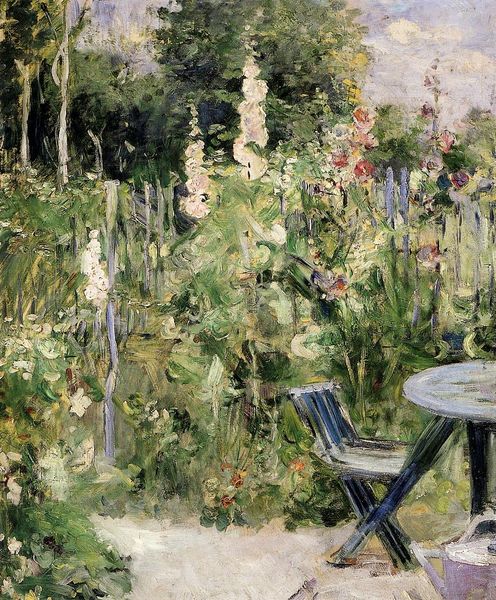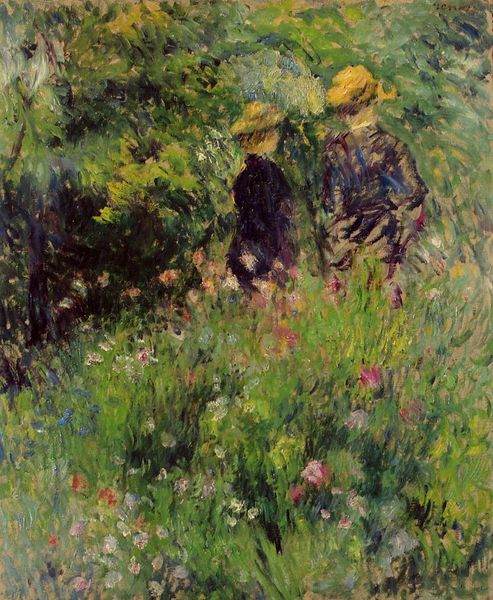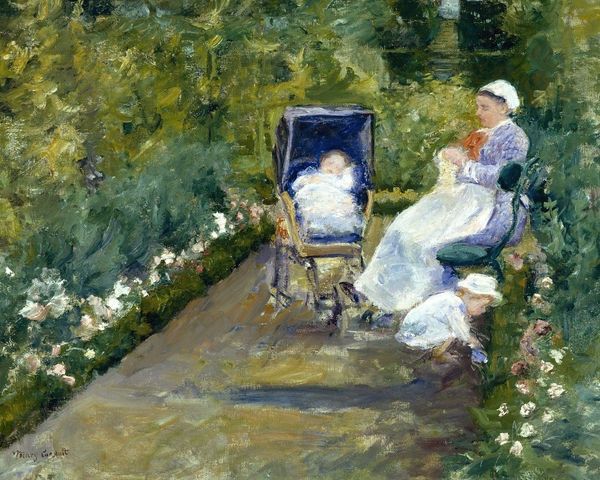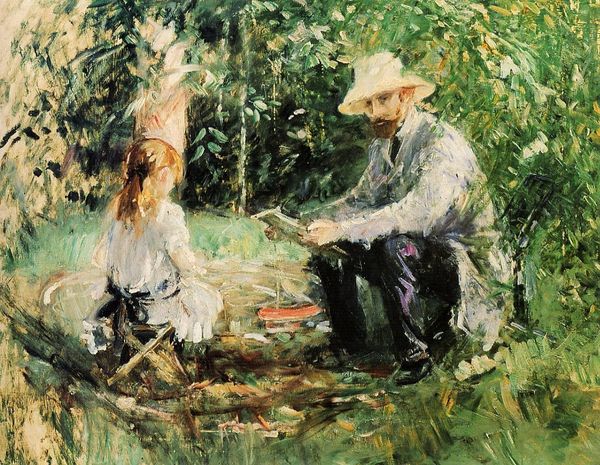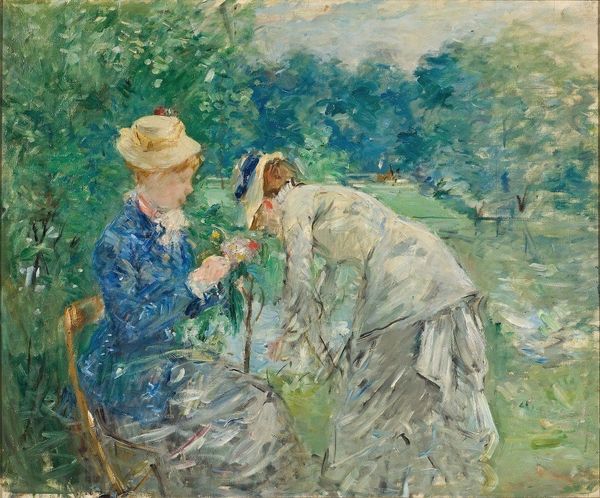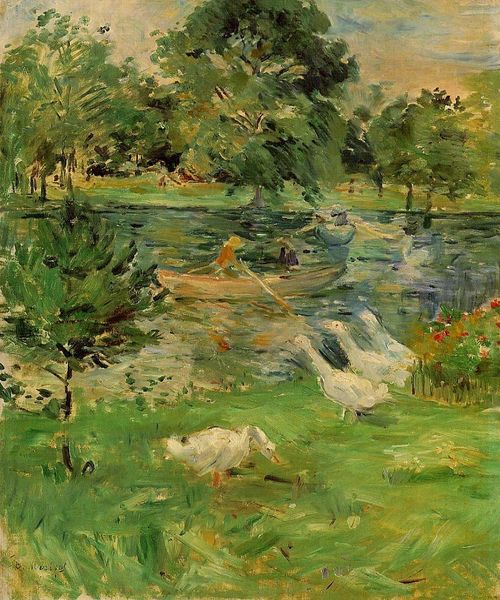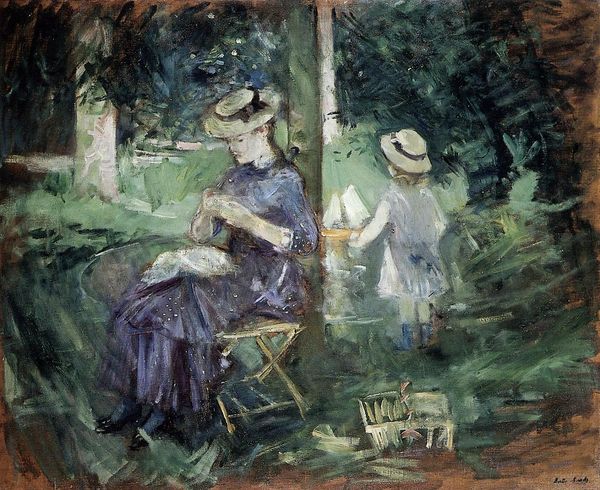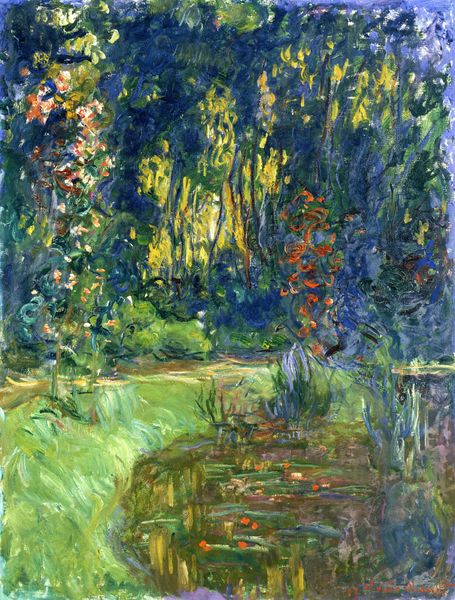
painting, plein-air, oil-paint
#
impressionist
#
garden
#
painting
#
impressionism
#
impressionist painting style
#
plein-air
#
oil-paint
#
landscape
#
impressionist landscape
#
figuration
#
oil painting
#
france
#
genre-painting
Copyright: Public domain
Curator: Before us, we see Berthe Morisot's "The Lesson in the Garden" from 1886, oil on canvas. It resides now in a private collection, adding a touch of mystery to its display. Editor: Immediately, the dappled sunlight and the figures nestled within the lush greenery evoke a feeling of quiet domesticity, a serene interlude removed from the bustling city. It’s a very inviting image. Curator: It’s certainly a glimpse into the private sphere, fitting into Morisot's project of representing the lives of women and their families in 19th-century France. Notice the way she employs the Impressionist style. Editor: Indeed, those quick, broken brushstrokes lend a sense of movement and immediacy, capturing a fleeting moment in time. The symbolic weight of a garden is never lost, either. From the “hortus conclusus”, or “enclosed garden”, which often appears as an allegory for the Virgin Mary, to the gardens of Renaissance paintings populated with the figures from mythology and courtly life… gardens mean a retreat into both naturalism and sociality, but often an exclusively cultivated type of each! Curator: It reflects the Impressionists' interest in depicting contemporary life "en plein air"… and of course, its accessibility would have shaped Morisot's process as well. As a female artist working at that time, it might have given her the independence of depicting images that she chose, as the Impressionists searched to portray modernity and break academic styles and modes. Editor: Absolutely. And isn’t the way the figures are situated interesting? A possible mentor sitting very straight with the apparent student looking downward; maybe more pensive, or withdrawn. Notice how their connection is subtle. Curator: That positioning reinforces prevailing societal structures. It suggests learning or transmission is happening, reinforcing normative ideas, as did the popularity of genre paintings in 19th century culture. I appreciate her willingness to show these everyday scenarios. Editor: The blurring effect almost feels deliberate – is Morisot subtly protesting the rigid power structures even while depicting the social scene? Curator: Perhaps we see her doing both—reflecting and questioning the conventions of her time, embedding nuanced commentary within the seemingly tranquil scene. It leaves us much to think about. Editor: It does. In its unassuming beauty, "The Lesson in the Garden" continues to cultivate insightful reflection.
Comments
No comments
Be the first to comment and join the conversation on the ultimate creative platform.

